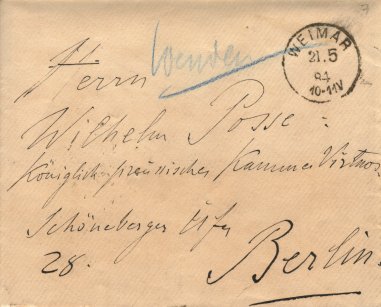Forum Replies Created
-
AuthorPosts
-
Kathleen Clark
ParticipantOne of my favorite “harp” movies is “Valmont.” Henry Thomas plays
Fairuza Balk’s harp teacher and they pass love notes back and forth
hidden in their harps. Poor Fairuza has to sing and play the harp at a
gathering in front of her intended aged betrothal (Jeffery Jones) and
the conniving Annette Benning gets involved with Fairuza and Henry so
there is harp huffing when Henry gets fired and has to pack up his harp
and get out of Dodge. Annette sets up a tryst for them, but they are so
young they don’t know what to do, so they act like the kids they are
and end up harping around. So the harp is a supporting character and I
always get a kick out of watching that film. I haven’t even mentioned
Colin Firth who plays Valmont. I’m too busy watching all the harp
antics. Poor Henry wandering the streets with harp in hand. Too bad no
one told Henry and Fairuza “thumbs up!” with all the dual harping going
on between them. Especially since he is a harp teacher.Kathleen Clark
ParticipantWell, with levers you will tune in one key and then find out if your
levers were installed correctly. Something to test when buying a lever
harp.This is sort of off-topic, but does play into the whole tempered /
untempered scale thing. Recovering from a stroke I have always wondered
and am still wondering why Paul Baker’s “Ladder of the Soul” affects me
physically more than other healing harp albums out there. Taking
improvisation lessons from him I now have a theory. He uses a lot of
pop chords on the lever harp, lots of seventh chord inversions, which
you don’t normally hear in ‘healing’ harp. He also mixes up the
fingering in the chords to give them an upward shimmer. I am wondering
if the seventh chords, the way he uses them, affects me because they
are in a sense ‘trying’ to get back to the untempered scale, that
upward spiral effect of the divine proportion. Sort of a marriage
between untempered and tempered for lack of a better description. It’s
my current theory anyway and one I’m exploring at the moment. I’ll
probably copy this post and put it onto another one at some point. One
thing leads to another…Kathleen Clark
ParticipantAre you talking about tempered tuning here? If so, that was the comment
I was going to add. As an adult student I had a horrible time tuning the harp until I was
able to purchase an electronic tuner. I am very sensitive to perfect
fifths and tempering octaves is always a trial for me, especially the
upper octaves. I remember reading somewhere to count the sound waves in
the upper octaves to get the tempering needed so the whole harp will
sound in tune, when tuning by ear. When I used to do it by ear I would
go nuts having to deliberately hear the upper octaves out of tune to
get them to sound good with the other intervals and octaves on the rest
of the harp.I have this ‘theory’ about the divine proportion and the spiral. It
keeps things growing and mutating, thus explaining why it isn’t
‘perfect’ and needs to be reined in and tempered to sound ‘good’ when
dealing with sound on instruments like the piano and the harp that have
so many octaves that ultimately have to sound in tune to each other.
The spiral has to be cut off and brought down into an ‘unnatural’ sound
(to my ear) in order to sound good (tempered).There are some harp players I know that deliberately tune untempered,
the theory being that for ‘healing’ harp the untempered harp is better
and more natural. My ears automatically go to the untempered tuning and
it is something I have to constantly fight when tuning by ear because I
know when I go to play the whole harp is going to sound out of tune if
I don’t.It is interesting reading the history of ‘tempering’ and the outcry
that went on when it was first introduced (“Unnatural! Against God’s
plan! Heretical!”). Huge debates and fun to read about. I suggest:“Temperament: How Music Became a Battleground for the Great Minds of Western Civilization” by Stuart Isacoff (available at Amazon)
Part of the description: “Involving mathematics, philosophy, aesthetics, religion, politics, and physics, Stuart Isacoff ‘s Temperament
invokes the tone of a James Burke documentary. However, the focus is
not on a modern invention, but rather a modern convention: that of
tuning keyboards so that every key is equally in tune–and equally out
of tune.”It’s the ‘out of tune’ part of tempering that constantly ‘gets’ me. Oooooh, my ears…..
Kathleen Clark
ParticipantI so totally agree with your choices. It is so hard to narrow the list
to ten with so many genres and recordings out there (a good thing for
us).I had a hard time leaving Dorothy Ashby off my list, as her recording
is probably more ‘landmark’ than the one jazz recording I listed, which
I went with because it showcases jazz on both pedal and lever.Zabaleta definitely needs to be on the list. The classical albums I
list do duplicate each other some, so Zabaleta could take the place of
any one of them (it would be hard for me to decide which one though).I thought about ‘landmark’ versus ‘historical’ with regard to Salzedo
and Grandjany, etc., then opted for the other albums since their music
is on them, plus more. What we need is a landmark list for each genre,
or a separate ‘historical’ list.Kathleen Clark
ParticipantWhat fun. Okay, here are five classical pedal harp CDs, four lever harp
CDs, and one pedal harp/lever harp CD, covering a whole bunch of
genres (Note: the classical albums have a good mix of harp history —
Grandjany, Salzedo, Renie, Tournier, etc.). If someone wanted a good
starting background in the harp here is what I would give them:1. Jana Bouskova “Virtuoso Encores” (classical – pedal) Highlight:
Chopin “Fantasie-Impromptu, Op. 66”
(Posse), Parish-Alvars “La Mandoline.” My jaw literally drops every time I hear this album. Is what she does humanly possible?2. Judy Loman “Harp Showpieces” (classical – pedal) Highlight: best
Hasselmans’ “La
Source” of the 27 recordings I’ve listened to. See my chart:
La Source Chart3. Elizabeth Hainen “Music for Solo Harp”
(classical – pedal)
Highlight: Chopin “Aeolian Harp
Etude, Op. 25, No. 1″ (Posse), Liszt “Un Sospiro” (Renie). I bought a
letter written by Franz Liszt to Wilhelm Posse from a European
manuscript dealer after listening to this album. I now have both their
molecules on my harpstand. They intermingle with my harpstrings.
Someday I will learn these pieces. Thank you, Ms. Hainen for changing
the course of my life.
4. Susann McDonald “Caprice” (classical – pedal) Highlight: Godefroid “Romance
without Words/Bois
Solitaire” Nobody does agogic accents like Ms. McDonald. I
ache.5. Alan Stivell “Renaissance de la Harp Celtique” (wire – the album
that
started the renaissance of the lever harp, wire and otherwise as we
know them today) Out of print for many years, get it while you can.
I took 13 lessons on a small harp 30 years ago because of this album. A
quote from
the Sylvia Woods Harp Center website:Kathleen Clark
ParticipantThe books I see adult students going through the most are all of
Kathryn Cater’s books published by Afghan Press. Every one of her
pieces is a little gem, each teaching a different skill. More than one
of my adult harp pals has mentioned that they enjoy playing “Cater”
because it isn’t just scales and arpeggios. When you finish learning a
skill you actually have a really nice little piece for your repertoire.I’ve been at the Sylvia Woods Harp Center and have overheard other
adult students showing her books to other adult students, over and over
again, so they are really making the rounds. The first piece I ever
played in public was Cater’s “Monarch Wings” from her ‘bug’ book. I
don’t even remember the title of her books any more. Adults just call
them the “bug” book, the “horse” book, the “bird” book, etc., and
everyone knows which book they mean, that’s how popular they are.For myself, after I finished Cater’s books I started Mary K. Lloyd’s
books (again from Afghan Press). I play a lot of her pieces now at City
of Hope. They have a -
AuthorPosts
